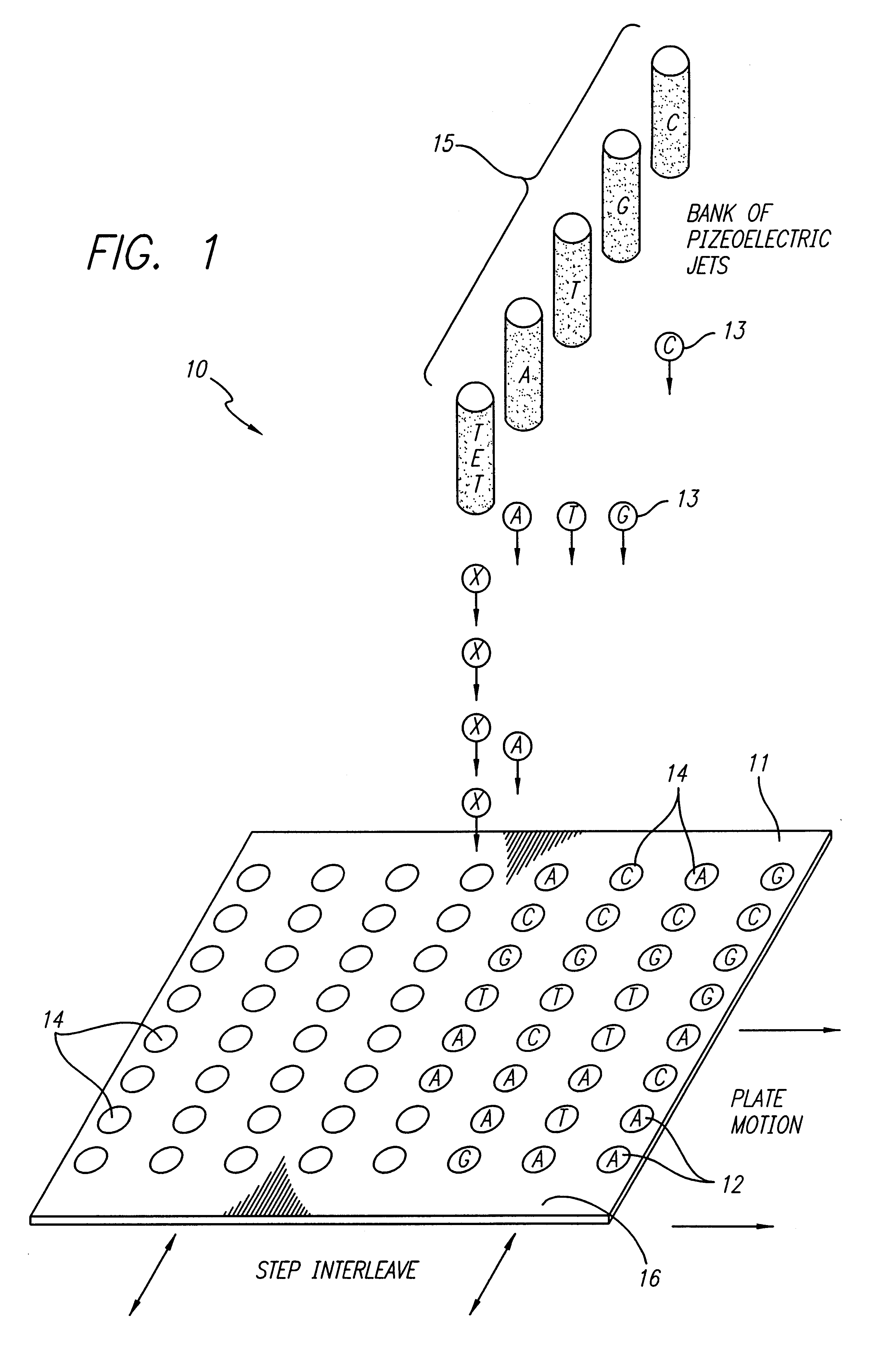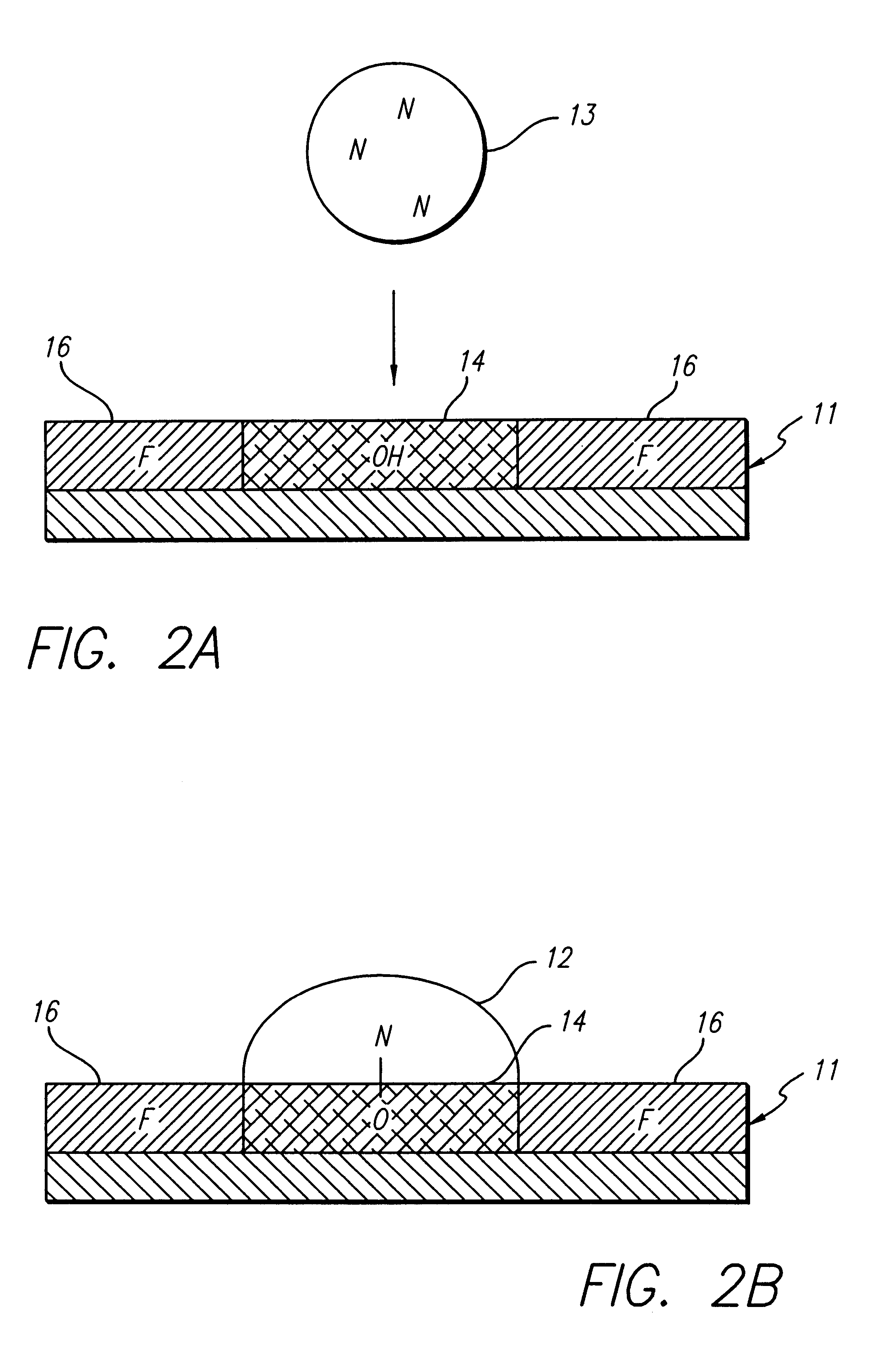Method and composition for chemical synthesis using high boiling point organic solvents to control evaporation
a technology of organic solvents and compositions, applied in the field of compositions for chemical synthesis using high boiling point organic solvents to control evaporation, can solve the problems of inability to achieve continuous synthesis of oligonucleotides, impractical and cumbersome techniques in practice, and excessive sorting and resorting, etc., to achieve the effect of reducing the evaporation of reagent solvents
- Summary
- Abstract
- Description
- Claims
- Application Information
AI Technical Summary
Benefits of technology
Problems solved by technology
Method used
Image
Examples
example 1
Oligonucleotide Synthesis on an Array Plate
Oligonucleotide synthesis was performed on a patterned glass array plate which provided functionalized aminoalkylsilane spots for synthesis separated by lipophilic fluoroalkylxysilanes. The array contained 500 spots with diameters of 0.5 mm. The array was synthesized, as described in the '796 Patent, using aminopropyl- and tetradecafluoro-1,1,2,2-tetrahydrooctyl siloxane for primary patterning.
Conversion of the short aminopropyl linker into the long-chain hydroxylalkyl linker was accomplished by treating the array with p-Nitrophenylchloroformate in dioxane:DCM (1:1) for 2 hours. Unreacted aminopropyl groups were capped using a 1:1 mixture of acetic anhydride and pyridine. The resulting carbamate intermediate was than converted into a hydroxyl bearing urea by reaction with 6-aminohexanol in acetonitrile overnight. A cleavable linker was synthesized by treating the patterned surface with 5'-DMT-nucleoside-3' succinate in acetonitrile utilizin...
example 2
Combinatorial Synthesis of Amino Acid Hydroxamate Derivatives
A patterned array was utilized as described in Example 1. Amino acids were first coupled to the array and then derivatized with different sulfonylchlorides to achieve diversity. Fmoc protected amino acids and activator (HATU) were dissolved in DMF:CH2CL2 (9:1). Both reagents were directed to single spots as described in the '796 Patent. After 15 minutes, the reagents were removed by spinning the array. After coupling, the array was washed with dichloroethane. Next the Fmoc protecting groups of the amino acids were removed by flooding the array surface with a 10% solution of piperidine in DMF for 10 minutes. After washing with DMF and THF, different sulfonyl chlorides dissolved in pyridine were directed to individual spots for derivatization. After a reaction time of 10 minutes, the reagents were removed by spinning and the array was washed with pyridine. After a final wash with pyridine, DMF, DMSO and DCE, the synthesized ...
PUM
| Property | Measurement | Unit |
|---|---|---|
| Angle | aaaaa | aaaaa |
| Angle | aaaaa | aaaaa |
| Volume | aaaaa | aaaaa |
Abstract
Description
Claims
Application Information
 Login to View More
Login to View More - R&D
- Intellectual Property
- Life Sciences
- Materials
- Tech Scout
- Unparalleled Data Quality
- Higher Quality Content
- 60% Fewer Hallucinations
Browse by: Latest US Patents, China's latest patents, Technical Efficacy Thesaurus, Application Domain, Technology Topic, Popular Technical Reports.
© 2025 PatSnap. All rights reserved.Legal|Privacy policy|Modern Slavery Act Transparency Statement|Sitemap|About US| Contact US: help@patsnap.com


